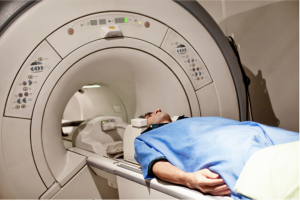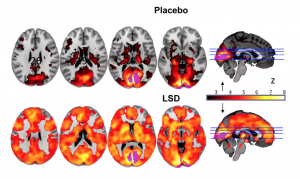By: Grace Sahyouni | UTS Staff Writer | SQ Online 2016-17
It may be surprising that the illegal drugs in the world today were not always classified as controlled substances. The classic example that comes to mind is Coca Cola’s extra ingredient in the early 20th century, cocaine. Many drugs first emerge with the intention of solely being used medicinally. Lysergic acid diethylamide (LSD), a commonly used recreational drug discovered by Albert Hoffman, is no exception.
Albert Hoffmann worked as a natural products chemist in the pharmaceutical industry before his discovery of LSD. There, he gained experience working with ergot extracts, which were traditionally used by housewives for their healing properties. Hoffmann was interested in these compounds and began experimenting with them in hopes of creating a potentially therapeutic drug. Almost a century later, however, LSD is considered to have no medical value and is classified as a Schedule 1 drug, the most dangerous category. But what exactly makes the drug so dangerous?
LSD is a psychedelic, hallucinogenic drug that acts as a stimulant to the body. Physically, a user can expect dilated pupils, an increased heart rate and blood pressure, insomnia and other effects. On a neuronal level, the drug is known to activate specific serotonin receptors in the brain that are responsible for cognitive functions in the prefrontal cortex, leading to impulsive behaviors. Hallucinations can take the form of scary images, causing feelings of panic, confusion, and sadness, also known as a “bad trip”. While researchers are still unsure of the exact effects of LSD on the brain, the answers might not be far away. A few months ago, David Nutt and other scientists at the Imperial College London took on the task of conducting the first ever brain scans of a patient on LSD.
One reason such a study has never been attempted before is that scientists must complete a hefty amount of paperwork and participate in background checks to obtain approval by the Department of Health, state health boards, and university review boards. This process took Mark Wallace, a UC San Diego doctor who studies medical marijuana, two years to accomplish. However, unlike marijuana, LSD cannot be used medicinally, which means there are even more restrictions. Not only does Nutt need to pay a large annual sum to retain a legal drug license, but he also needs to acquire medical-grade LSD, which is no simple task.
The brain sca ns were accomplished via functional magnetic resonance imaging (fMRI), which uses a strong magnetic field and radio waves to image the blood flow in the brain as a measure of neural activity. Patients who had previously experienced the effects of the drug were administered LSD, and then their brains were imaged. Results showed that the LSD group had normally segregated regions of their brains that communicated with each other. For example, the visual cortex is normally the sole brain region responsible for visual perception; however, brain scans of LSD patients showed that many other regions begin to contribute to the visual processing system. These regions of excess blood flow begin to explain the hallucinatory effects and the hypersensitive emotional experiences associated with LSD use.
ns were accomplished via functional magnetic resonance imaging (fMRI), which uses a strong magnetic field and radio waves to image the blood flow in the brain as a measure of neural activity. Patients who had previously experienced the effects of the drug were administered LSD, and then their brains were imaged. Results showed that the LSD group had normally segregated regions of their brains that communicated with each other. For example, the visual cortex is normally the sole brain region responsible for visual perception; however, brain scans of LSD patients showed that many other regions begin to contribute to the visual processing system. These regions of excess blood flow begin to explain the hallucinatory effects and the hypersensitive emotional experiences associated with LSD use.

These results are significant since studies of human consciousness under the influence of drugs have not been conducted previously. Nutt has long argued for more research on the relationship between psychedelics and the brain, and how drugs can be put to medical use. Nutt and other researchers at the institution plan to conduct similar experiments that will give insight into the drug’s effects on creativity, as well as any potentially therapeutic implications of LSD. These first ever brain scans can be seen as an early attempt to discover any medicinal properties of LSD, just as Hoffman intended to do many years ago.
[hr gap=”0″]
Sources:
- https://www.theguardian.com/science/2016/apr/11/lsd-impact-brain-revealed-groundbreaking-images
- http://gizmodo.com/heres-what-scientists-do-when-they-need-illegal-drugs-f-1679610944
- http://www.nature.com/news/brain-scans-reveal-how-lsd-affects-consciousness-1.19727
- http://www.medicaldaily.com/your-brain-drugs-truth-about-where-lsd-trips-take-your-mind-and-body-287852
- http://www.cnn.com/2016/04/12/health/lsd-brain-imaging/
- http://www.rsc.org/chemistryworld/Issues/2006/January/LSD.asp